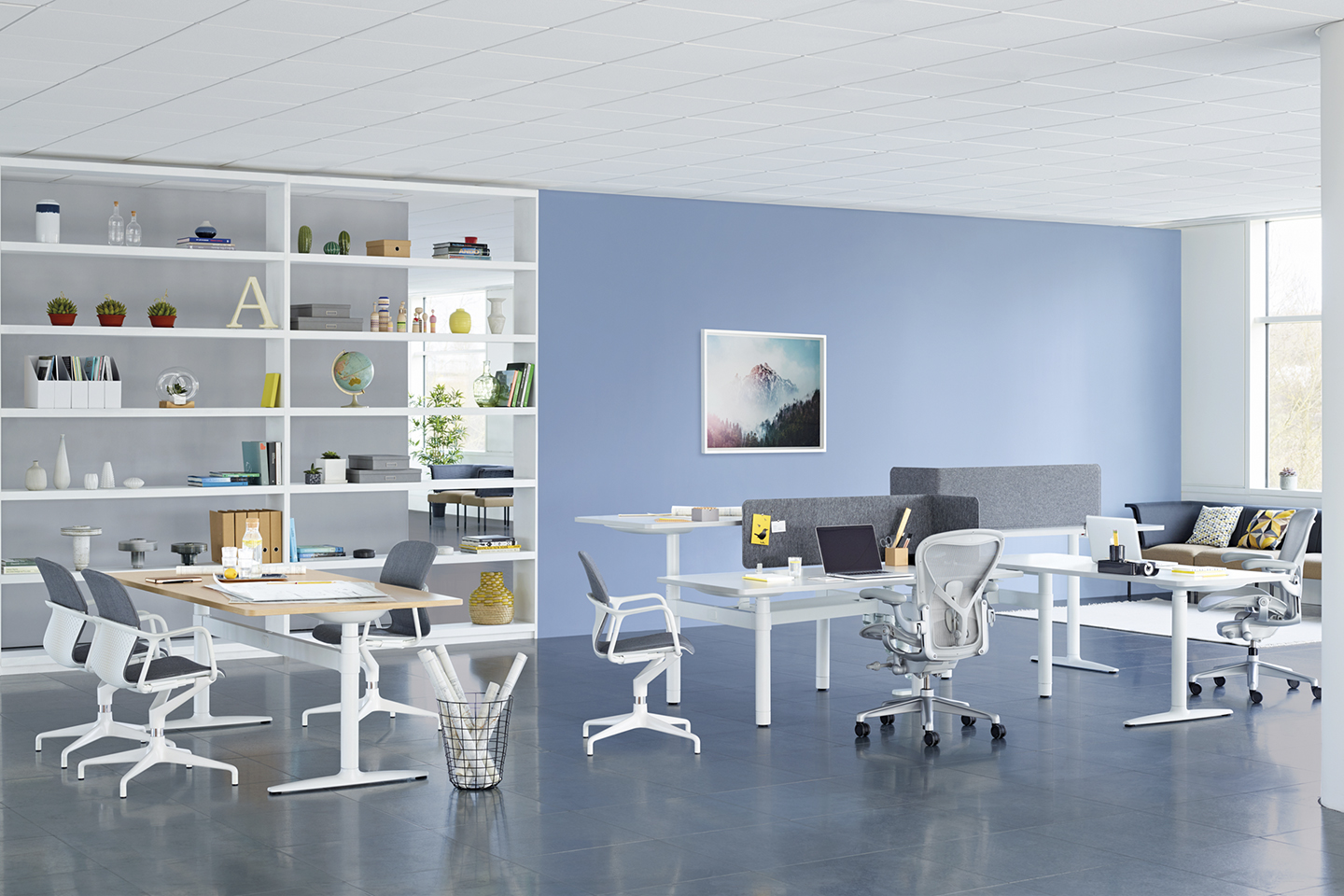With the post-COVID-19 work landscape raising new concerns about the health and safety of employees, employers and their customers, businesses are facing a new challenge: how do we adapt to the new normal?


Inspiring New Work Spaces
With the post-COVID-19 work landscape raising new concerns about the health and safety of employees, employers and their customers, businesses are facing a new challenge: how do we adapt to the new normal?
How do we as a business, create healthy and productive work spaces, while keeping motivation and inspiration high?
The answer may lie not just in our work, but in our workplaces. The office from 2020 needs to be transformed and reimagined.
Reworking Floor Plans after COVID-19
In post-COVID-19 work spaces, floor plans, plates and office furnishings will not only need to be practical but adaptable and mobile - while also providing a sense of security and comfort.
To achieve this, furniture designers like Herman Miller have begun reworking the traditional office. Workstations are now facing away when possible and physical elements are being introduced all while keeping a relaxed, open feel.
Although it has not yet been conclusively determined whether partitions are useful in limiting the spread of the virus, this setup does, at the very least, offer reassurance to staff by giving the security of cleanliness and safety.
Creating Distance
While there are many elements still unknown, what is clear is that space is at a premium. With the world’s top health authorities advising that there should be at least 1.5 metres of physical distance between workstations, an average worker is going to require 4 square meters.
As some spaces don’t allow this, shared working areas and desks are going to have to be kept to a minimum. In addition, furnishings need to be regularly sanitised and cleaned every day.
As a bonus though, spaces are transforming and finding new uses. For example, meeting rooms also can be adapted into socially distant work spaces when not in use.
Private and Confidential
With COVID-19 also comes an increased need for separation. Helping to build confidence in the safety and hygiene of office environments are pieces like the Catena Office Landscape by Herman Miller. A versatile partitioning system that can be easily reconfigured to create separation between desks and more.
Specifically designed for adaptability, pieces like this are perfect for the agile working spaces of the future. It shifts easily between configurations, moving from rectangular and grid formation to non-linear shapes to optimise workspaces. It provides both visual and auditory privacy when you need it.
Agile Spaces
Like the spaces themselves, office furniture will also need to be adaptable. Luckily there are pieces already primed for the evolving workplace like Herman Miller’s Atlas Office Landscape, an elegant work system that combines vertical adjustability with collaboration. It’s a desk that can be instantaneously reconfigured, moving from sitting, standing and Z-plan layouts with ease.
Atlas can be used to promote physical distancing by creating space between work areas, but can be easily configured for interactive work styles when physical distancing measures are no longer in place.
Evolving the Traditional Work Space
In order to follow strict health guidelines and physical distancing recommendations, traditional workspaces are going to have to change. For example, Atlas can be rearranged to set up four work areas appropriately spaced apart. This gives more flexibility while also catering to health practices.
In addition, Catena can be used to create a barrier between each work surface, which promotes the perception of protection and safety in the work environment. It also has the added benefit of reducing noise transfer, producing a quieter office environment ideal for calls and video meetings
Open Concept Spaces
To keep health risks at a minimum and comply with the latest from the Australian Government can be a challenge for an open office construction. Atlas can be rearranged to stagger workstations to assist with this.
The number of seats can be reduced to provide the minimum of four square metres per person and new work surfaces can be added in place of meeting spaces. To support physical distancing measures, Catena can be used to create physical barriers between desks.
Encouraging Work from Home Arrangements
Flexible and remote working arrangements have fast become an essential part of the new post-pandemic reality. For remote work arrangements to be successful, staff must be given the right support to help them be productive, no matter where they’re working from. This assistance can be in the form of a new desk, filing system or even, and importantly, an ergonomically designed office chair.
Take for example the new and improved Aeron Chair. A staple of the modern office, the new Aeron maintains its classic shape but maximises comfort and manoeuvrability. Meticulously designed, the chair includes a suspension backrest designed for natural movement, with varied tension zones providing support. Its elastomeric seat-back makes cleaning and sterilisation fast and simple.
While it’s unclear still how the landscape of our offices and our world will be post COVID-19, what we can say with impunity is that it has, and will continue to, change the way employers and employees use, engage with and treat their workplaces.






